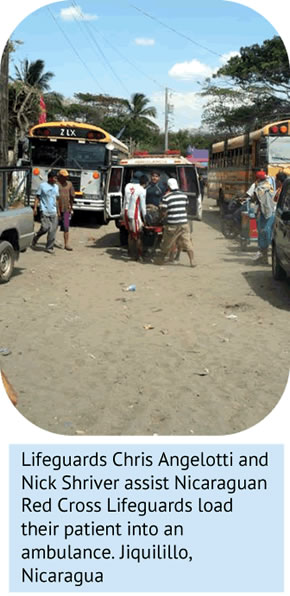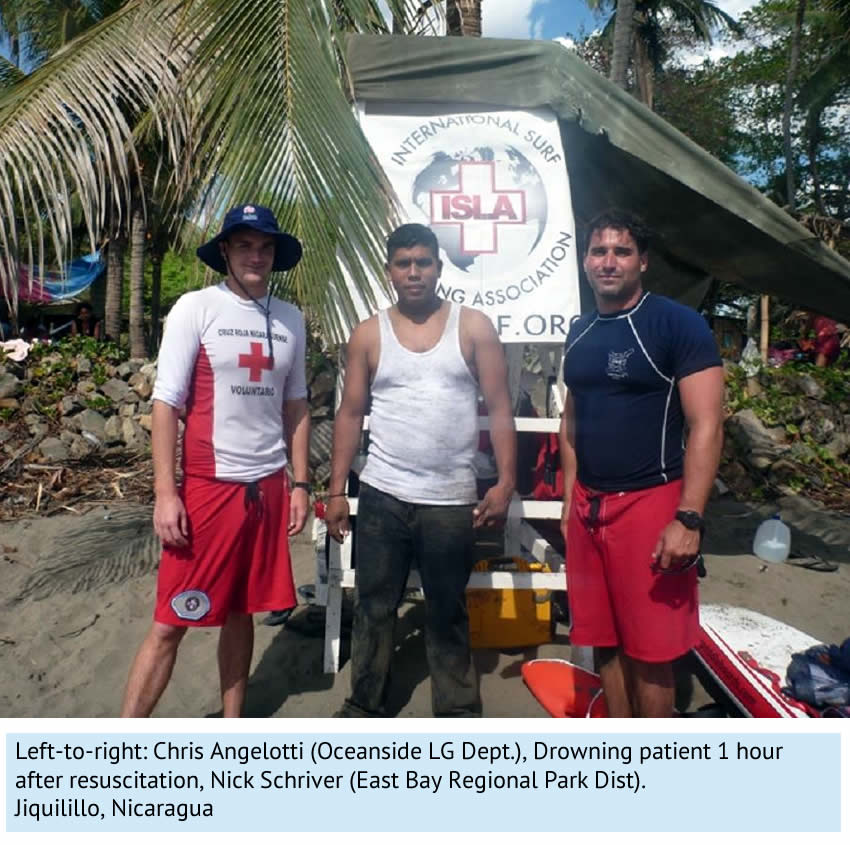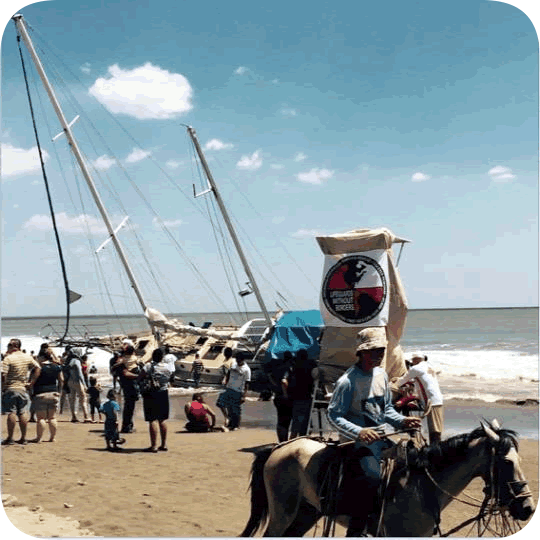Hello fellow wilderness adventurers, river rats, day trippers, weekend warriors, and everyone else who likes to get away from the city for a while. It's that time of year when we hopefully get to spend more time at the lake, beach, river, waterfall, or other aquatic setting. Some of you will venture several weeks into the backcountry, and some of you may just drive 30-45 minutes from home. Regardless of where you go, water safety should always be consideration. Some good friends and colleagues of mine recently published a "Drowning Chain of Survival1", which is essentially prevention, rescue, and treatment. If the chain of survival was proportioned according the importance of each step, then the green "Prevent Drowning" circle would be 90 percent of the page and the remaining steps would make up only 10 percent. This is a lot like fire safety: smoke alarms, sprinkler systems, keeping matches away from kids, not doing dumb stuff with gasoline and propane while drunk, and talking to our kids about fire safety save far more lives every year than the most technological advances in fire trucks or the latest advances in therapy for burn surgery.

Water safety begins before the season starts. Make sure you are in appropriate physical shape for the journey ahead. Your first time off the couch since last season probably shouldn't be a four-day trip charging Cherry Creek on the Tuolumne River. All of your kids should have swim lessons by age four, and even younger if they are physically able. Even if you are going for a calm day on the lake, make sure that you have your lifejacket, that it fits appropriately, and is suitable for the task at hand. Every year, there are deaths of competent swimmers in recreational boating and other accidents that could have been prevented by wearing a lifejacket. Your lifejacket should be on when you are in and around the water, and not "just for accidents." Here is a handy guide from the United States Coast Guard on selecting the proper lifejacket. Avoid alcohol while you are out on the water, as it increases your relative risk of injury and drowning, even at lower blood alcohol levels that wouldn't be considered "drunk."
Another scenario that I have personally encountered in the backcountry is making the decision where and how to cross a river or stream. Learning to read rivers and moving water is beyond the scope of this article and identifying safe crossings takes practice. Sometimes the hardest (and safest) decision to make is NOT crossing. Imagine that you are hiking out from your three day trip, and now that ankle-deep stream is now a raging 100-foot wide section of whitewater. You are unable to find a safe crossing location and it is getting dark. The right decision may be to set up camp and wait for morning to make another plan. Knowing the weather and conditions upstream before you leave will help you to make these decisions and anticipate rising or falling water levels.

When prevention fails, outdoor aquatic settings are often difficult for emergency responders to access and the drowning process can result in death in as little as 10 minutes. Knowing the initial steps to take can mean the difference between life and death. Rescues should only be performed by trained personnel, because the hazard that caused the first person to struggle still exists for the well intentioned rescuer. There are so many reports of well-intentioned rescuers dying by drowning that the medical community has taken notice, naming it "Aquatic Victim Instead of Rescuer." That said, I know that many of you out there would not hesitate to jump in the water to rescue a friend or family member. If you choose to do so, you should be wearing a lifejacket, and follow the mantra of "Reach, Throw, Row." Reach to them with a stick or a branch; throw them a rope, cooler, soccer ball, dry bag full of air, or anything that floats. If you have a canoe, kayak, boat, or other watercraft, then you can "row" to them to provide assistance. You should not attempt to directly contact someone who is in severe distress and in danger of drowning because they will be in a state of panic and not thinking rationally. As you approach them, they will push or pull you under to provide themselves with buoyancy. This video is not staged. At 1:24, the man that is struggling pulls the other woman underwater. Fortunately, he is able to touch the side immediately afterwards.

For the final chain, providing medical care, remember that drowning is a brain problem with lung complications. Providing high quality chest compressions AND ventilations are important, and compression-only CPR is not appropriate for drowning patients. Everyone should be encouraged to take a CPR course, but remember that not all CPR classes are created equal. You should take one that covers adults and children, and discusses drowning. Providing oxygen to the drowning patient is the most important step and can be accomplished without an oxygen cylinder, using just available air and your exhaled air. A Lifeguards Without Borders and International Surf Lifesaving Association team recently returned from Nicaragua and had a drowning patient that was apneic with a weak pulse, and was successfully resuscitated using just a bag valve mask and room air. We brought oxygen cylinders, but the company that filled them took the week off for Easter, and we were unable to use them! You can read about the full rescue and resuscitation here. The patient survived neurologically intact and even walked by the tower one hour later! (Note: though the patient had a good outcome, discharge after 30 minutes is not the recommended hospital treatment.)
